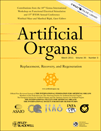Monitoring of Muscle and Bone Recovery in Spinal Cord Injury Patients Treated With Electrical Stimulation Using Three-Dimensional Imaging and Segmentation Techniques: Methodological Assessment
Presented in part at the 10th Vienna International Workshop on Functional Electrical Stimulation and 15th IFESS Annual Conference held September 8–12, 2010 in Vienna, Austria.
Abstract
Muscle tissue composition accounting for the relative content of muscle fibers and intramuscular adipose and loose fibrous tissues can be efficiently analyzed and quantified using images from spiral computed tomography (S-CT) technology and the associated distribution of Hounsfield unit (HU) values. Muscle density distribution, especially when including the whole muscle volume, provides remarkable information on the muscle condition. Different physiological and pathological scenarios can be depicted using the muscle characterization technique based on the HU values and the definition of appropriate intervals and the association of such intervals to different colors. Using this method atrophy, degeneration, and restoration in denervated muscle undergoing electrical stimulation treatments can be clearly displayed and monitored. Moreover, finite element methods are employed to calculate Young's modulus on the patella bone and to analyze correlation between muscle contraction and bone strength changes. The reliability of this tool though depends on S-CT assessment and calibration. To assess imaging quality and the use of HU values to display muscle composition, different S-CT devices are compared using a Quasar body scanner. Density distributions and volumes of various calibration elements such as lung, polyethylene, water equivalent, and trabecular and dense bone are measured with different scanning protocols and at different points of time. The results show that every scanned element undergoes HU variations, which are greater for materials at the extremes of the HU scale, such as dense bone and lung inhale. Moreover, S-CT scanning with low tube voltages (80 KV) produces inaccurate HU values especially in bones. In conclusion, 3-D modeling techniques based on S-CT scanning is a powerful follow-up tool that may provide structural information at the millimeter scale, and thus may drive choice and timing to validate rehabilitation protocols.




